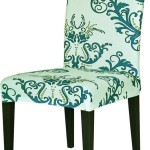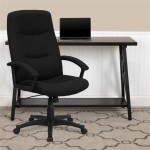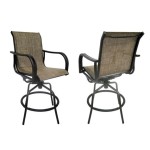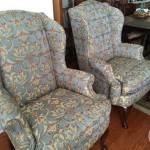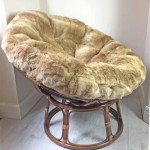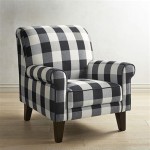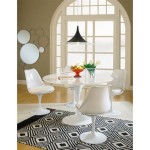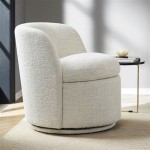Outdoor Hanging Egg Chair Without Stand: A Comprehensive Guide
The outdoor hanging egg chair has become a popular addition to patios, gardens, and balconies, offering a comfortable and aesthetically pleasing seating option. While many models come with their own stands, the option of acquiring a hanging egg chair without a stand presents a unique set of considerations and advantages. This article will delve into the specifics of outdoor hanging egg chairs without stands, focusing on key factors such as installation, weight capacity, material choices, safety precautions, and alternative suspension methods.
The primary distinction of an outdoor hanging egg chair without a stand lies in its reliance on an existing overhead structure for support. This necessitates careful planning and assessment of the intended location. Unlike standalone models, these chairs offer greater flexibility in placement if a suitable support structure already exists, such as a sturdy tree branch, a covered porch beam, or a reinforced ceiling joist. However, this flexibility comes with the responsibility of ensuring the chosen support is capable of bearing the weight of the chair and its occupant safely.
Before purchasing an outdoor hanging egg chair without a stand, it is crucial to thoroughly evaluate the available attachment points. This evaluation should include a visual inspection for any signs of weakness, rot, or damage. For wooden structures, examine for splintering, cracks, or evidence of insect infestation. For metal structures, check for rust, corrosion, or bending. It is highly recommended to consult with a structural engineer or qualified contractor if there are any doubts about the structural integrity of the potential support point.
Once a suitable support structure has been identified, the next step is to determine the appropriate hanging hardware. This typically involves a combination of heavy-duty hooks, chains, springs, and carabiners. The specific hardware required will depend on the weight capacity of the chair, the height of the support structure, and the desired range of motion. It is essential to select hardware that is rated for the intended load and is specifically designed for outdoor use to withstand the elements.
The material composition of the hanging egg chair itself is another significant consideration. Outdoor models are generally constructed from weather-resistant materials such as resin wicker, powder-coated steel, and treated fabrics. Resin wicker provides a natural aesthetic while being durable and easy to clean. Powder-coated steel offers strength and corrosion resistance. Cushions should be made from water-resistant or quick-drying fabrics to prevent mildew and mold growth.
The shape and size of the hanging egg chair can also vary considerably. Some models are more enclosed and provide a cocoon-like feel, while others are more open and airy. The size of the chair should be appropriate for the intended user and the available space. Consider the overall dimensions of the chair, including the width, depth, and height, to ensure it fits comfortably in the desired location and does not obstruct walkways or other features.
Understanding Weight Capacity and Safety Regulations
Weight capacity is paramount when selecting an outdoor hanging egg chair without a stand. Always adhere to the manufacturer's weight limit and avoid exceeding it under any circumstances. Overloading the chair can lead to structural failure, resulting in injury or damage. The weight capacity should be clearly labeled on the chair itself and in the accompanying documentation. It is also advisable to factor in a safety margin when estimating the total weight the chair will need to support, accounting for the weight of the occupant, any cushions or accessories, and any potential dynamic loads caused by movement.
Furthermore, understanding and adhering to safety regulations is crucial. These regulations often pertain to the type of materials used in construction, the strength of the suspension hardware, and the stability of the overall structure. While specific regulations may vary depending on the location, manufacturers generally adhere to industry standards for safety and quality. It is recommended to purchase from reputable manufacturers that have a proven track record of producing safe and reliable products.
Regular maintenance is essential to ensure the continued safety and longevity of the hanging egg chair. This includes periodically inspecting the suspension hardware for signs of wear and tear, such as rust, corrosion, or fraying. Any damaged or worn components should be replaced immediately. The chair itself should also be cleaned regularly to remove dirt, debris, and potential allergens. Cushions should be stored indoors during periods of inclement weather to prevent water damage and mildew growth.
When installing the hanging egg chair, it is vital to follow the manufacturer's instructions carefully. Incorrect installation can compromise the safety and stability of the chair. Ensure that all connections are secure and that the chair hangs level. It is also recommended to conduct a test hang before using the chair regularly, gradually increasing the weight it supports to ensure that the support structure and hardware are capable of handling the load without issue.
Consider the placement of the chair within the overall outdoor space. Ensure that there is sufficient clearance around the chair to allow for free movement and prevent collisions with other objects. Avoid placing the chair in areas where it could be exposed to extreme weather conditions, such as direct sunlight or strong winds. These conditions can accelerate the deterioration of the chair and its components.
Exploring Alternative Suspension Methods
While direct attachment to a sturdy overhead beam is a common method, several alternative suspension methods can be employed for outdoor hanging egg chairs without stands. One option is to use a heavy-duty swing hanger that is specifically designed for suspending swings and other similar items. These hangers typically consist of a metal plate with a pivoting mechanism that allows for smooth and controlled movement. They are often bolted directly to a wooden beam or concrete ceiling.
Another alternative is to use a chain and carabiner system. This allows for adjustable height and flexibility in positioning the chair. The chain can be looped around a beam or attached to a hook, and the carabiners are used to connect the chair to the chain. It is essential to use high-quality, load-rated chains and carabiners that are specifically designed for outdoor use. The chain should be regularly inspected for any signs of wear or damage, and the carabiners should be checked to ensure that they are securely locked.
In situations where a direct attachment point is not readily available, a temporary support structure can be constructed. This could involve building a simple wooden frame or using a metal A-frame to provide a stable and secure hanging point. However, it is crucial to ensure that the temporary support structure is designed and built to withstand the weight of the chair and its occupant safely. Consulting with a structural engineer or experienced carpenter is recommended in these cases.
Rope suspension is another option, although it requires careful consideration of the type of rope used. Natural fiber ropes, such as manila or sisal, are generally not recommended for outdoor use due to their susceptibility to rot and mildew. Synthetic ropes, such as nylon or polyester, are more durable and weather-resistant. However, it is essential to choose a rope with a sufficient tensile strength and to regularly inspect it for signs of wear or fraying.
Regardless of the chosen suspension method, it is crucial to ensure that the weight is evenly distributed and that the chair hangs level. An uneven distribution of weight can put undue stress on certain parts of the chair and its suspension system, increasing the risk of failure. Adjustments can be made by lengthening or shortening the chains or ropes as needed.
Material Selection and Environmental Considerations
The materials used in the construction of an outdoor hanging egg chair significantly impact its durability, weather resistance, and overall environmental footprint. Choosing sustainable and eco-friendly materials can help minimize the chair's environmental impact and ensure its longevity.
Recycled materials are an increasingly popular choice for outdoor furniture. Resin wicker made from recycled plastic bottles is a durable and weather-resistant option that helps reduce plastic waste. Powder-coated steel frames can also be made from recycled steel, further reducing the environmental footprint of the chair. When selecting cushions, look for fabrics made from recycled materials, such as recycled polyester or organic cotton.
The use of responsibly sourced wood is another important consideration. Look for wood that is certified by the Forest Stewardship Council (FSC), which ensures that it comes from sustainably managed forests. Avoid using wood that has been treated with harmful chemicals, such as creosote or pentachlorophenol, as these can leach into the environment and pose health risks.
The manufacturing process also plays a role in the environmental impact of the chair. Choose manufacturers that have implemented environmentally friendly practices, such as reducing waste, conserving energy, and using water-based finishes. Look for certifications such as ISO 14001, which indicates that the manufacturer has an environmental management system in place.
The longevity of the chair is another factor to consider. A well-built chair made from durable materials will last longer, reducing the need for frequent replacements and minimizing waste. Regular maintenance and proper storage can also extend the lifespan of the chair.
Finally, consider the end-of-life disposal of the chair. Can the materials be recycled or repurposed? Choose materials that can be easily recycled or that can be used to create new products. Consider donating or selling the chair if it is still in good condition but no longer needed.
By carefully considering the material selection and environmental aspects of an outdoor hanging egg chair without a stand, individuals can make informed choices that minimize their environmental impact and ensure the long-term sustainability of their outdoor space. This includes assessing the structural integrity of the support, carefully selecting hardware, understanding weight capacity limitations, and choosing suspension methods that prioritize safety and longevity. By addressing these factors, the user can enjoy the numerous benefits of an outdoor hanging egg chair, from relaxation and comfort to aesthetic appeal, while minimizing the potential risks involved with an unsupported structure.

Noble House Autry 46 In Black Hanging Outdoor Patio Egg Chair With Gray Cushions No Stand 83522 The Home

Dwvo Hanging Egg Chair Indoor Outdoor Swing Without Stand Wicker Hammock With Cushion Chain Lounge

Boho Grey Rattan Hanging Chair No Stand Indoor Outdoor Wicker Egg Shape Tollo

Outdoor Swing Chair How To Find The Perfect One

Autmoon Outdoor Garden Rattan Egg Swing Chair Hanging With Red Cushions No Stand W874107310 The Home

Layden Indoor Outdoor Wicker Hanging Egg Teardrop Chair No Stand

Hanging Egg Chair Indoor Outdoor Swing Without Stand Red

Hanging Egg Chair Without Stand Folding Outdoor Swing With Uv Resistant Waterproof Cushion Wicker Rattan Swinging For Patio Garden Balcony Blue Walmart Com

Coolshark Hammock Chair With Stand Hanging Egg C Type Bracket Swing Outdoor Special Construction Cup Holder Sec 003 The Home

Bean Outdoor Patio Swing Chair Without Stand In Coffee White
